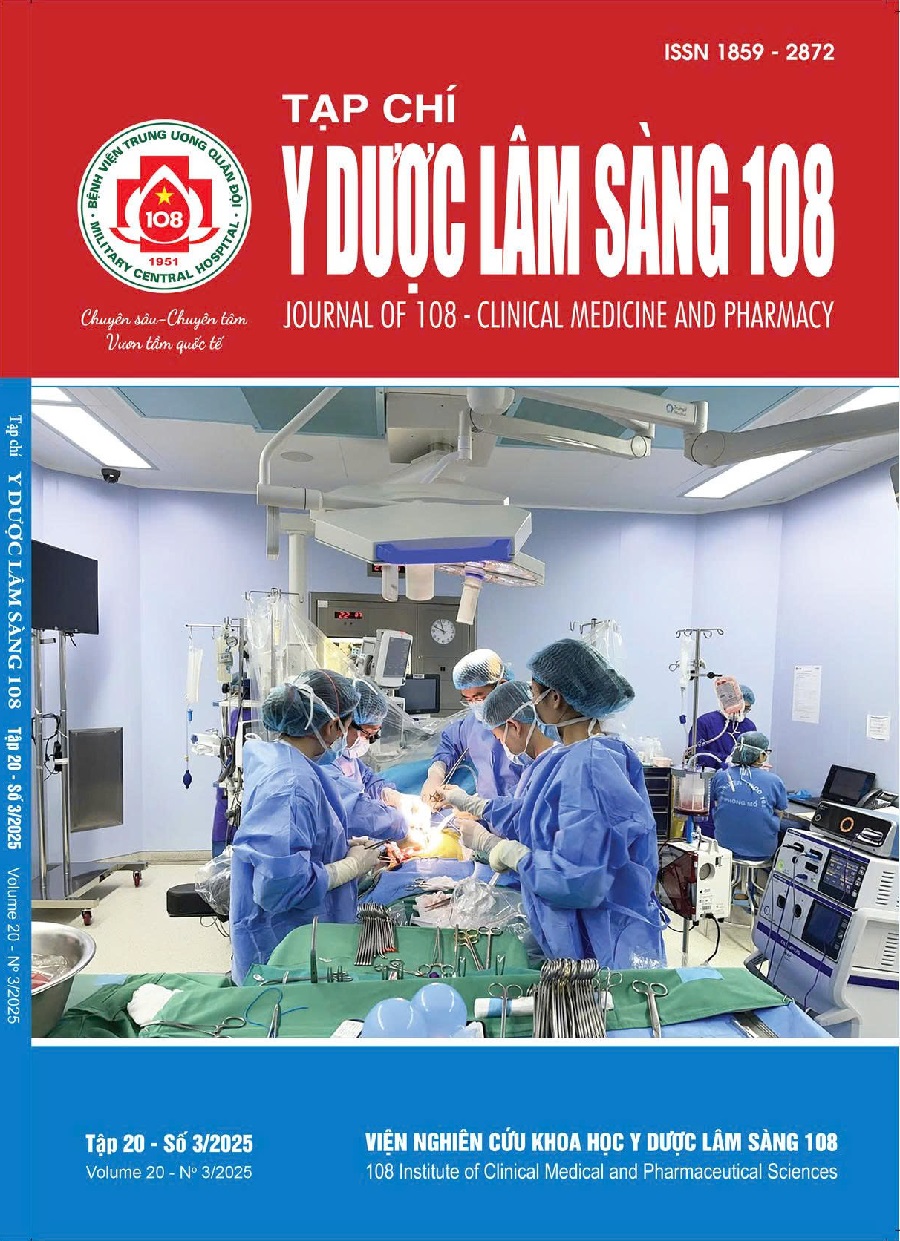Study on the phenotypic characteristics of Sepsis-associated acute kid-ney injury
Main Article Content
Keywords
Abstract
Objective: To determine the phenotypic characteristics of sepsis-associated acute kidney injury (SA-AKI), and the relationship between the phenotypic characteristics of SA-AKI and AKI severity according to ADQI 28. Subject and method: A prospective observational study was conducted on 212 patients with sepsis and septic shock at the 108 Military Central Hospital. Result: The prevalence of SA-AKI was 67.5%. Early SA-AKI accounted for 86.0%, while late SA-AKI accounted for 14.0%. The group with early SA-AKI had significantly higher creatinine levels [170 (136-256) vs. 127 (87-175) µmol/l], p<0.05, and a higher incidence of severe AKI compared to the group with late SA-AKI, with p<0.05. Conclusion: SA-AKI is common in patients with sepsis and septic shock, typically occurring within two days after admission from the emergency department. Early SA-AKI is associated with a higher incidence of severe AKI than late SA-AKI.
Article Details
References
2. Zarbock A, Nadim MK, Pickkers P et al (2023) Sepsis-associated acute kidney injury: Consensus report of the 28th Acute Disease Quality Initiative workgroup. Nat Rev Nephrol 19(6): 401-417. doi:10.1038/s41581-023-00683-3.
3. Lima RS, Marques CN, Silva Júnior GB et al (2008) Comparison between early and delayed acute kidney injury secondary to infectious disease in the intensive care unit. Int Urol Nephrol 40(3): 731-739. doi:10.1007/s11255-008-9352-9.
4. White KC, Serpa-Neto A, Hurford R et al (2023) Sepsis-associated acute kidney injury in the intensive care unit: incidence, patient characteristics, timing, trajectory, treatment, and associated outcomes. A multicenter, observational study. Intensive Care Med 49(9): 1079-1089. doi:10.1007/s00134-023-07138-0.
5. Monard C, Bianchi N, Kelevina T, Altarelli M, Schneider A (2024) Epidemiology and outcomes of early versus late septic acute kidney injury in critically ill patients: A retrospective cohort study. Anaesth Crit Care Pain Med 43(1): 101332. doi:10.1016/j.accpm.2023.101332.
6. Singer M, Deutschman CS, Seymour CW et al (2016) The Third International Consensus Definitions for Sepsis and Septic Shock (Sepsis-3). JAMA 315(8): 801-810. doi:10.1001/jama.2016.0287.
7. KDIGO (2012) KDIGO Clinical Practice Guideline for Acute Kidney Injury. Kidney International Supplements. vol 2 | supplement 1.
8. Rewa O, Bagshaw S (2014) Acute kidney injury—epidemiology, outcomes and economics. Nat Rev Nephrol 10: 193–207. https://doi.org/10.1038/nrneph.2013.282.
9. Poukkanen M, Vaara ST, Pettilä V et al (2013) Acute kidney injury in patients with severe sepsis in Finnish Intensive Care Units. Acta Anaesthesiol Scand 57(7): 863-872.
10. Wiersema R, Jukarainen S, Vaara ST et al (2020) Two subphenotypes of septic acute kidney injury are associated with different 90-day mortality and renal recovery. Critical Care 24:1-10.
11. Maiden MJ, Otto S, Brealey JK et al (2016) Structure and function of the kidney in septic shock. A prospective controlled experimental study. American journal of respiratory and critical care medicine 194(6): 692-700.
12. Maslove DM, Tang B, Shankar-Hari M et al (2022) Redefining critical illness. Nature medicine 28(6): 1141-1148.
13. Göcze I, Jauch D, Götz M et al (2018) Biomarker-guided intervention to prevent acute kidney injury after major surgery: The prospective randomized BigpAK study. Ann Surg 267(6):1013-1020.
14. Meersch M, Schmidt C, Hoffmeier A et al (2017) Prevention of cardiac surgery-associated AKI by implementing the KDIGO guidelines in high risk patients identified by biomarkers: the PrevAKI randomized controlled trial. Intensive care medicine 43: 1551-1561.
 ISSN: 1859 - 2872
ISSN: 1859 - 2872
